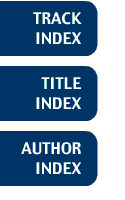
Track: Water Distribution, Wastewater, Sewer
Planning of Water Distribution System by Using GIS

Ju Hwan KimSeong Ryung, Ha , Chang Hahk, Hahm
As the planning of a water distribution system is carried out through complicated and repeated processes, research has tried to improve those processes through better tools of mathematical and computational application. The purpose of our research is mainly composed of two themes. First, we intended to find the best pipeline route layout of many alternatives by using GIS and multicriteria decision analysis (MCA) in a multiregion water distribution system. Second, we intended to determine the optimal pipe size using linear programming in a branched pipeline system. For selecting the best layout of a pipeline route, we introduced some effective processing ways at the planning stage of a multiregion water distribution system with one source area and many water demand areas. Various factors were considered in such a complicated system as follows: hydraulic stability, economic property, and sociotechnical applicability. An integrated information system based on GIS and MCA techniques was used not only for suggesting some alternatives for pipeline layout but also for finding the best alternative among them. We used GIS as the function of drawing pipeline alternatives and spatial analysis. Of all these alternatives, we can choose the best pipeline layout using the analytic hierarchy process (AHP) proposed by Satty. In order to evaluate applicability in the real world, an application was tried for a planning area at Pohang in Korea. The results showed that the developed system might be very helpful to the water distribution designer who faced trouble in the decision process of finding the best alternative. For determining optimal pipe size in a branched pipeline system, we developed an optimal pipe size model by the linear programming method. Also KYPIPE (by Don J. Wood) was used as the hydraulic model. The objective function includes annual operation costs (electricity rate) in addition to initial construction costs, thus producing a more reasonable optimal decision. The model selects the optimal diameter, not in the form of a continuous diameter but in the form of a commercial discrete diameter using the pipe lengths as decision variables instead of the pipe diameters. The model not only determines the optimal number of pumping stations but also finds the optimal location and pumping head for each pumping station selected. To evaluate the developed program, we compared the results of General Algebraic Modeling System (GAMS) Release 2.25. And we will combine the optimal pipe size model into the pipeline route selection system as soon as possible.
Ju Hwan Kim
Korean Water Resources Corporation
462-1, Junmin-Dong, Yusung-Gu, Taejeon, KOREA
Taejeon, 305-390
KOREA
Telephone: +82-042-860-0326
Fax: +82-042-860-0371
E-mail: juhwan@lote.kowaco.or.kr